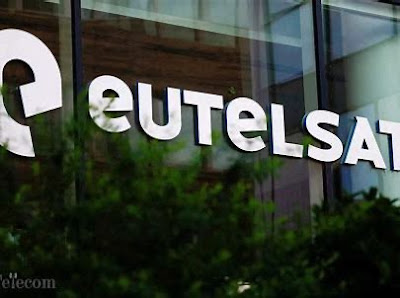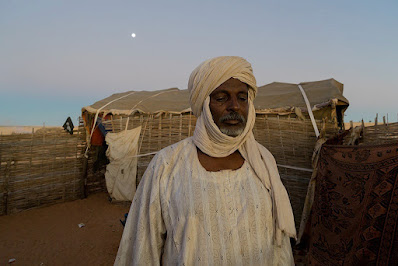EUTELSAT'S stock price has more than quadrupled since a public row on February 28 between Ukrainian President Volodymyr Zelensky and US President Donald Trump, after which Washington paused military aid to Ukraine. Eutelsat already supports government and institutional communications in Ukraine, and told Reuters it can provide an alternative for certain government and defence applications. Here is a summary by Reuters of how Eutelsat might help Ukraine meet its communication needs.
Eutelsat OneWeb Form World’s 1st GEO-LEO Comms Operator.
Source: Orbital Today 29 Sep 2023
___________________________
By Supantha Mukherjee in Stockholm and Gianluca Lo Nostro in Gdansk;
Dated Friday, 7 March 2025 6:36 PM GMT - full copy:
Explainer: Could Europe's Eutelsat help to replace Starlink in Ukraine?
STOCKHOLM/GDANSK, March 5 (Reuters) - Suggestions that Ukraine could lose access to Elon Musk's Starlink satellite internet system, which has been vital in maintaining its military communications as it fights Russia's invasion, have focused investor interest on Starlink's smaller European rival Eutelsat (ETL.PA).
.
Sources familiar with the matter told Reuters last month that the United States might use Starlink access as a lever in talks with Kyiv about its critical minerals, and the Franco-British company has said it is talking to the EU about providing additional services to Ukraine.
Eutelsat's stock price has more than quadrupled since a public row on February 28 between Ukrainian President Volodymyr Zelenskiy and U.S. President Donald Trump, after which Washington paused military aid to Ukraine.
Here is a summary of how Eutelsat might help Ukraine to meet its communication needs:
HOW CRUCIAL IS STARLINK TO UKRAINE?
Starlink users access the internet for data or voice communication by using a small satellite dish to bounce signals off a constellation of satellites overhead.
Ukraine's fixed-line and mobile networks have been badly damaged by bombing since Russia invaded in February 2022, and Starlink has helped Kyiv to fill the void by sending tens of thousands of its dishes with terminals.
Some are made available to civilians, often trying to contact relatives on smartphones.
But most are used by Ukraine's armed forces, which also have to contend with heavy signal jamming and interception of communications on the front lines. Ukrainian units often talk to each other via Starlink, and its services have become virtually indispensable for battlefield command and control.
Ukraine also used Starlink to guide attack drones until Musk's rocket firm SpaceX curbed the practice two years ago.
Originally, SpaceX helped to fund provision of Starlink to Ukraine. The U.S. government then took over, though last month Poland said it had been paying Ukraine's Starlink subscription and would continue to do so.
HOW DOES EUTELSAT COMPARE TO STARLINK?
Eutelsat already supports government and institutional communications in Ukraine, and told Reuters that it can provide an alternative for certain government and defence applications.
Since its merger in 2023 with Britain's OneWeb, Eutelsat controls the only operational global-coverage constellation, besides Starlink, of satellites in low earth orbit (LEO).
Starlink's more than 7,000 LEO satellites, suited to real-time communication, allow it to reach more users around the world and offer higher data speeds.
But Eutelsat says that, even with only 630 or so LEO satellites, backed up by 35 linked satellites in higher, geostationary orbit, it offers the same capabilities as Starlink in Europe.
Starlink promises broadband at up to 200 megabits per second, Eutelsat 150.
OneWeb terminals, however, cost as much as $10,000, plus a monthly subscription price. Starlink charges Ukrainian users a one-time payment of $589 in addition to a monthly subscription of $95-$440, depending on the usage.
It is not known whether any donor would offer to fund more Ukrainian OneWeb subscriptions. France and Britain, which are spearheading a peace deal to present to the U.S., hold a combined 24.8% stake in Eutelsat Group.
ARE THERE ANY OTHER ALTERNATIVES?
Global competition to Starlink is shaping up, but slowly.
Luxembourg-based SES (SESFg.LU) delivers some satellite services to the Western NATO defence alliance via its medium earth orbit constellation of O3b mPOWER satellites.
But like many other legacy satellite operators, it prioritises corporate customers, governments and militaries, offering no direct-to-consumer services, with terminals that are not consumer-friendly.
Some EU initiatives such as IRIS² (pronounced 'Iris squared') and GOVSATCOM - which Kyiv is interested in - will take years to become fully operational.
(This story has been corrected to say 'sources familiar with the matter,' not 'negotiators,' in paragraph 2)
The Technology Roundup newsletter brings the latest news and trends straight to your inbox. Sign up here.
View original and video (02:56 min) here: https://www.reuters.com/technology/space/could-europes-eutelsat-help-replace-starlink-ukraine-2025-03-05/
___________
Related
From Times of India
Dated 11 March 2025
How and why Elon Musk's public spat with Poland FM led to almost 400% jump in stock price of Europe's Starlink rival
Eutelsat's stock skyrocketed nearly 390% last week due to speculation it may replace SpaceX's Starlink in Ukraine. The French satellite company is exploring an expanded role in Ukraine and is negotiating with the EU to bolster internet services. ... Eutelsat, Europe's rival to Elon Musk's Starlink, has seen ...
Full story: http://timesofindia.indiatimes.com/articleshow/118888047.cms
End









